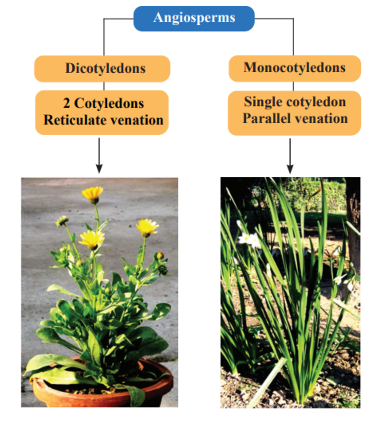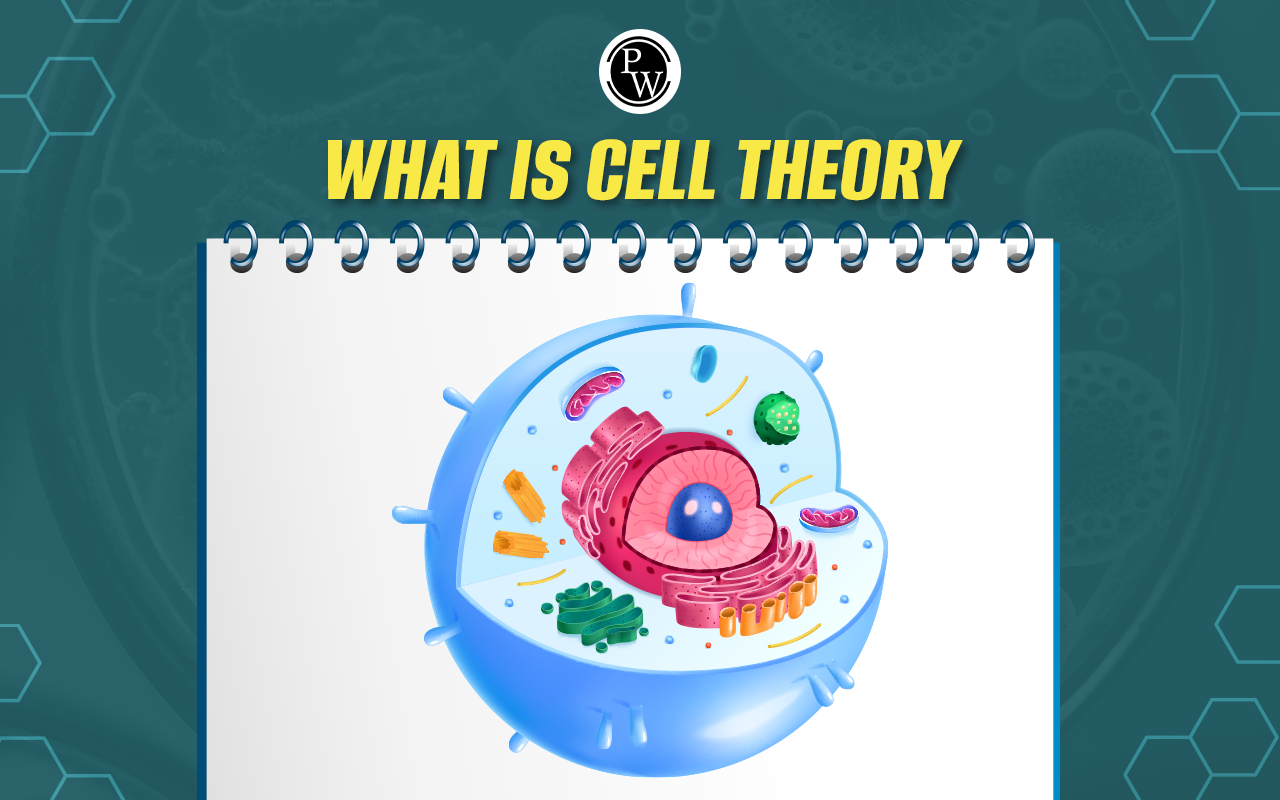
Angiosperms , also known as flowering plants, are a significant group of plants studied in biology. They are the most diverse and largest group of plants on Earth, containing more than 250,000 species. Angiosperms are critical for the environment, economy, and human life. Understanding them is essential for the NEET Exam because they cover various topics in plant biology, including classification, structure, reproduction, and importance.
Angiosperms Definition
Angiosperms are plants that produce flowers and bear seeds enclosed within fruits. These plants have a unique reproductive system, with male and female reproductive organs present in the flower. The seeds of angiosperms develop inside the fruit, which is a result of the fertilization process. The presence of flowers distinguishes angiosperms from other plants like gymnosperms, which do not produce flowers.Classification of Angiosperms
Angiosperms can be classified based on various characteristics such as the number of seed leaves (cotyledons), flower structure, and vascular tissue arrangement. The primary classification of angiosperms is into two major groups:- Monocots: These plants have only one cotyledon in the seed. Their leaves usually have parallel veins, and their flower parts typically come in multiples of three. Examples include grasses, lilies, and orchids.
- Dicots: These plants have two cotyledons in the seed. Their leaves generally have reticulate veins, and their flower parts typically come in multiples of four or five. Examples include roses, sunflowers, and beans.

Characteristics of Angiosperms
Angiosperms have several distinct characteristics that make them unique:- Flowers: Angiosperms are the only group of plants that produce flowers, which are the reproductive structures. Flowers contain male (stamens) and female (pistils) reproductive organs.
- Fruits : After fertilization, the ovary of the flower develops into a fruit that contains seeds.
- Seeds: The seeds of angiosperms are enclosed in a fruit, unlike gymnosperms, where seeds are exposed.
- Vascular Tissu e: Angiosperms have well-developed vascular tissue (xylem and phloem), which helps in the transport of water, minerals, and food throughout the plant.
- Double Fertilization: A unique feature of angiosperms is double fertilization, where one sperm cell fertilizes the egg, while another sperm cell fuses with two other nuclei to form the endosperm, which nourishes the developing embryo.
- Pollination: Angiosperms rely on various methods of pollination , including wind, insects, birds, and water, which facilitate fertilization.
Also Check:
- Free Toppers Notes for NEET
- Free NEET Lectures by PW Faculties
- NEET Study Material, Free Sample Papers, Book, Toppers Notes, PYQs
Importance of Angiosperms
Angiosperms are vital for both the environment and human society. They contribute to the ecosystem by producing oxygen, supporting food webs, and enhancing biodiversity. Some key benefits include:- Food Source: Many of the plants we use as food, such as fruits, vegetables, grains, and legumes, are angiosperms.
- Medicinal Uses: Numerous medicines and therapeutic products come from angiosperms, which contain important bioactive compounds.
- Economic Value: Angiosperms, like cotton, rubber, and timber-producing plants, have economic value. They contribute to industries such as agriculture, textiles, and construction.
- Oxygen Production: Through photosynthesis , angiosperms release oxygen, which is essential for life on Earth.
- Carbon Sequestration: Angiosperms help in reducing carbon dioxide levels in the atmosphere, thus playing a role in combating climate change.
MCQs of Angiosperms
Q1. Winged pollen grains are present in;
- Mustard
- Cycas
- Mango
- Pinus
Q2. Which of the following statements is correct? (2018)
- Ovules are not enclosed by the ovary wall in gymnosperms.
- Selaginella is heterosporous, while Salvinia is homosporous.
- Horsetails are gymnosperms.
- Stems are usually unbranched in both Cycas and Cedrus.
Q3. Select the mismatched pair;
- Pinus - Dioecious
- Cycas - Dioecious
- Salvinia - Heterosporous
- Equisetum - Homosporous
Answers of MCQs of Angiosperms
Ans1 . Pinus, Ans2. Ovules are not enclosed by ovary walls in gymnosperms., Ans3. Pinus - Dioecious Physics Wallah (PW) offers NEET Online Coaching in India, designed to make quality education accessible to all aspiring medical students. PW is dedicated to empowering students nationwide to excel in the NEET exam and achieve their dreams of a medical career.| NEET Exam Important Links | |
|---|---|
| NEET Syllabus | NEET Biology Diagrams |
| NEET Biology MCQ | NEET Biology Chapter wise Weightage |
| NEET Biology Notes | NEET Previous Year Question papers |
Angiosperms FAQs
Q. What is called an angiosperm?
Ans. An angiosperm is a plant that produces flowers and has seeds enclosed within fruits.
Q. What is the difference between gymnosperms and angiosperms?
Ans. Gymnosperms do not produce flowers or fruits and have exposed seeds, while angiosperms produce flowers and enclose their seeds in fruits.
Q. Is angiosperm a female?
Ans. Angiosperms are not female. They have both male and female reproductive organs in their flowers.
Q. What are 7 examples of angiosperms?
Ans. Examples include rose, sunflower, mango, apple, pea, cotton, and lily.
Q. What are the 3 largest angiosperms?
Ans. The three largest angiosperms are the eucalyptus, giant sequoia, and the coast redwood.
🔥 Trending Blogs
Talk to a counsellorHave doubts? Our support team will be happy to assist you!

Check out these Related Articles
Free Learning Resources
PW Books
Notes (Class 10-12)
PW Study Materials
Notes (Class 6-9)
Ncert Solutions
Govt Exams
Class 6th to 12th Online Courses
Govt Job Exams Courses
UPSC Coaching
Defence Exam Coaching
Gate Exam Coaching
Other Exams
Know about Physics Wallah
Physics Wallah is an Indian edtech platform that provides accessible & comprehensive learning experiences to students from Class 6th to postgraduate level. We also provide extensive NCERT solutions, sample paper, NEET, JEE Mains, BITSAT previous year papers & more such resources to students. Physics Wallah also caters to over 3.5 million registered students and over 78 lakh+ Youtube subscribers with 4.8 rating on its app.
We Stand Out because
We provide students with intensive courses with India’s qualified & experienced faculties & mentors. PW strives to make the learning experience comprehensive and accessible for students of all sections of society. We believe in empowering every single student who couldn't dream of a good career in engineering and medical field earlier.
Our Key Focus Areas
Physics Wallah's main focus is to make the learning experience as economical as possible for all students. With our affordable courses like Lakshya, Udaan and Arjuna and many others, we have been able to provide a platform for lakhs of aspirants. From providing Chemistry, Maths, Physics formula to giving e-books of eminent authors like RD Sharma, RS Aggarwal and Lakhmir Singh, PW focuses on every single student's need for preparation.
What Makes Us Different
Physics Wallah strives to develop a comprehensive pedagogical structure for students, where they get a state-of-the-art learning experience with study material and resources. Apart from catering students preparing for JEE Mains and NEET, PW also provides study material for each state board like Uttar Pradesh, Bihar, and others
Copyright © 2025 Physicswallah Limited All rights reserved.
Get App









